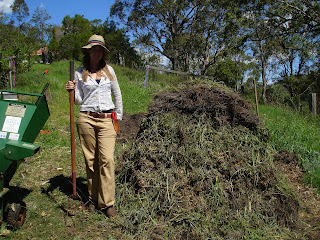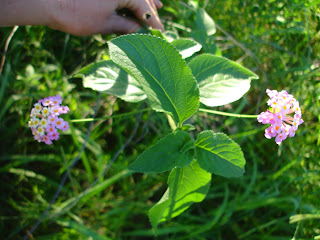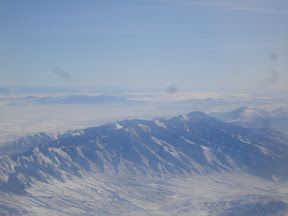This is Red.

9:30pm
This is Red.

6:00pm
This is Red.

This is Red’s mama, Poppy.

And his papa, Billy.

3:00pm
And this is Red, a one year old bull, on the afternoon of his transformation - from living, breathing being to food on our plate.

He spent his last day with the goats in the home pasture, while the rest of the herd was sent out to pasture so they would not be traumatized by witnessing his death.
Red was slaughtered in the loving hands of his caretaker and master; it was not very dramatic. He was roped in the pasture, and after a quick prayer quickly sliced through the adam’s apple, and held down by three (strong) men while his muscles spasmed. He bled to death. It was quick and painless, and Red was surrounded by people who knew him in life and honored the passing of his spirit.
We spent several hours cutting up the carcass into separate cuts of meat. It was amazing to see a T-bone, top side, and flank steak miraculously peel away from the carcass under the hands of an experienced butcher. Everything was cut up, labeled, and packaged to freeze, from the liver to the tongue to the legs - if not for human consumption, then for the dogs (they eat well around here).
When we finished, all that was left were the entrails, which were wheelbarrowed over to the chicken tractor. Three days later, Red’s guts are now full of flies and maggots which the chickens are quickly consuming. While the stench of rotting guts is unbearable (if you happen to walk past that section of the farm), it is comforting to know that every last inch of Red is being put to use, or recycled back in to the system. Not a cell of his body is "waste."
Witnessing little Red’s slaughter and butchering was powerful, especially after having taken care of him for a few days, since my farm duties include taking the cows out to pasture each day.
But the moment when I suddenly felt overcome with emotion occurred around midnight after the slaughter was cleaned up, and our bellies were full of the most delicious steak I have ever had.
Geoff and I took Bluey (the cattle dog) out to the field, and we brought back the herd of nine cows, one less than usual. I was nervous that they would smell the death on us, but they were responsive and docile, peacefully walking back to the paddock where they are kept at night. They passed the site of the slaughter, and kept plodding on.
I breathed a sigh of relief.
The herd had almost reached the shoot to the home paddock, and then as if on cue, all nine of them pivoted simultaneously, and slowly turned around to stare at the site of the slaughter a few hundred meters away. Billy the bull, patriarch, and Red’s papa, began to wail.
And then I witnessed a site I never imagined – a herd of cows mourning. They lined up single file and walked to the site of the slaughter, circled around, and moaned and brayed.
Never have I felt more connected to, and thankful for, the food that I eat. As I stood there in the darkness, quiet and in awe at the herd's expression of loss, I was overcome with gratitude for the cow that filled my belly, the grass that fed the cow, the soil that fed the grass, the microbes that fed the soil…

















